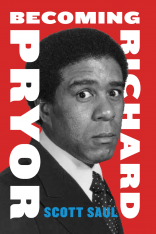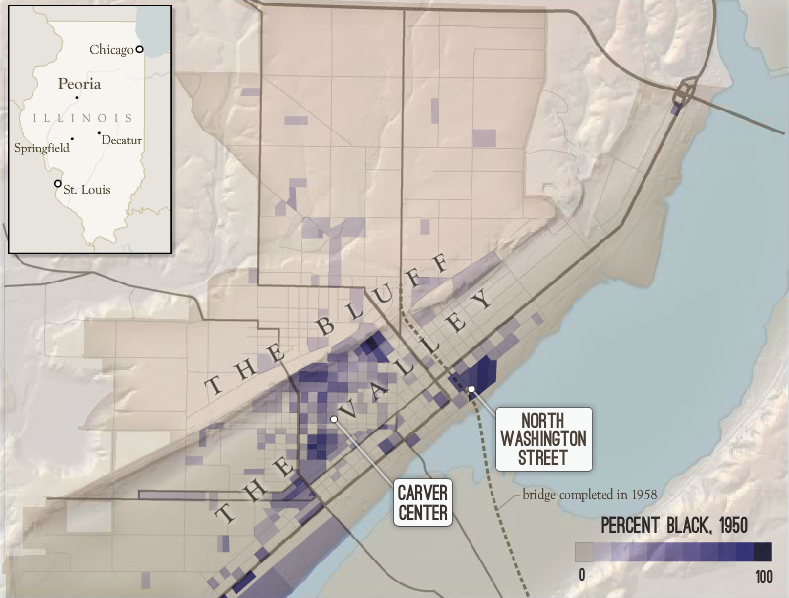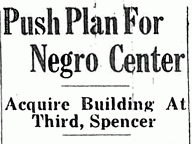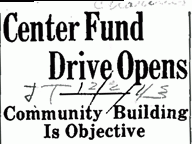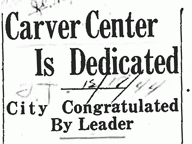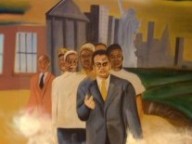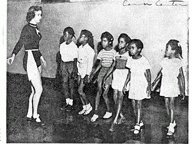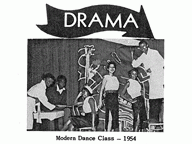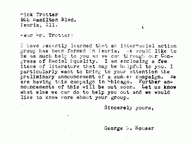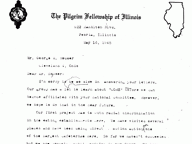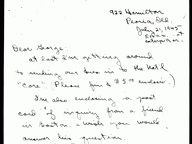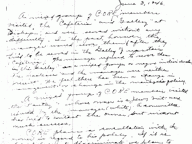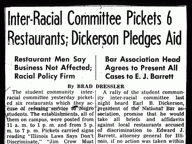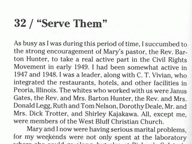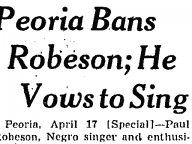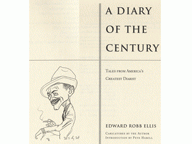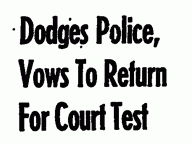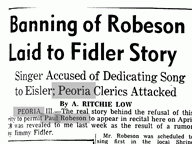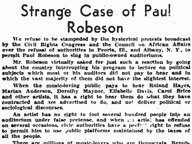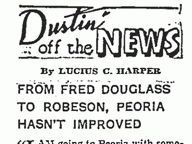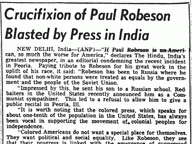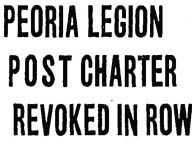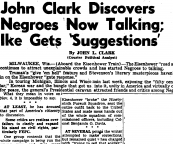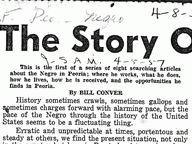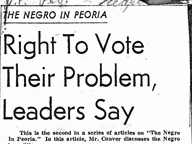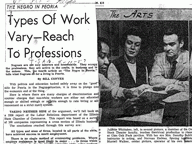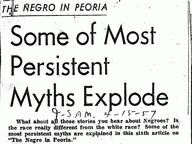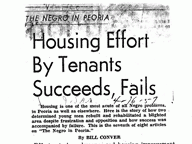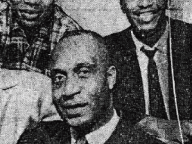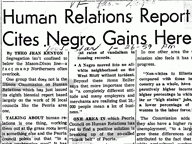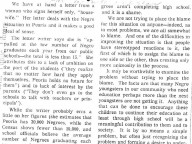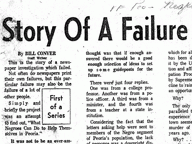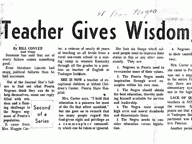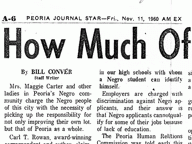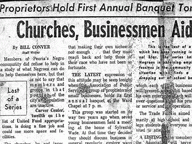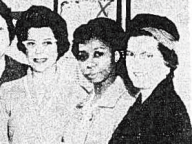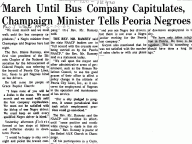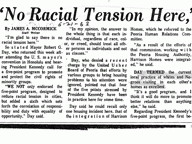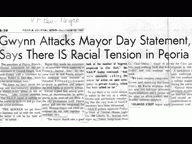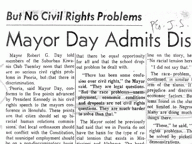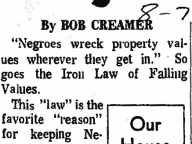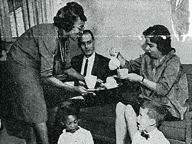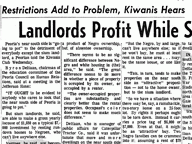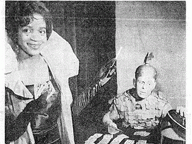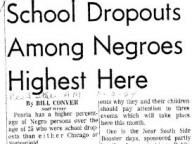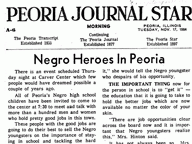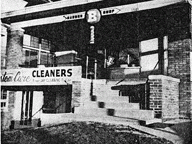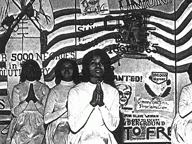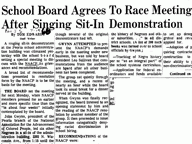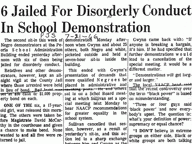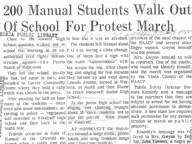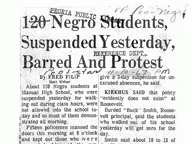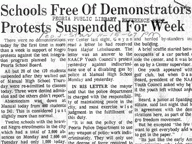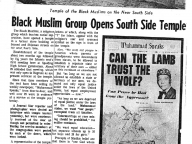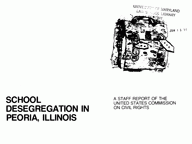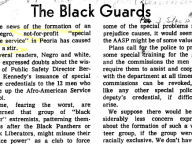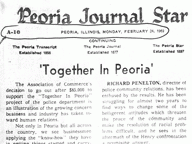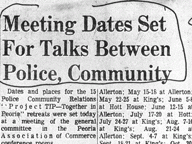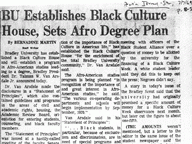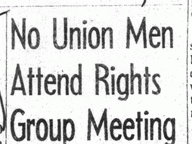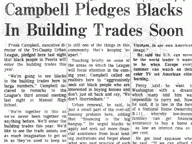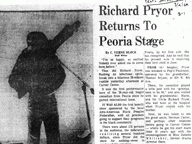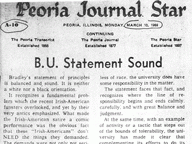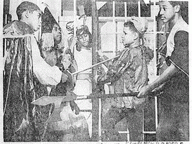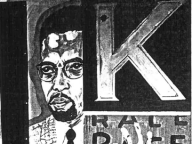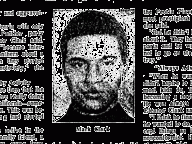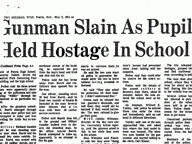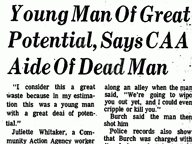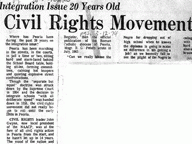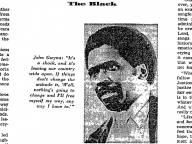Peoria by the numbers: black residents were concentrated in a few neighborhoods
Segregation and Desegregation
When Richard Pryor was born in December 1940, Peoria was like many cities in the North—segregated, on a practical level, from top to bottom. Over the next 30 years, everything changed for blacks in Peoria, and nothing much. Activists succeeded in banishing to the past the most glaring symbols of segregation, like whites-only restaurants and theaters, but they struggled to defeat a tougher foe: the city’s entrenched patterns of inequality.
A Snapshot: Segregation in 1940s Peoria
In 1940, segregation in Peoria was different in degree but arguably not in kind from segregation in the South. None of Peoria’s hotels admitted blacks. Many of its laundries would not take clothes worn by blacks, and only two restaurants in its downtown served blacks. Most movie theaters seated blacks only in the rear seats or mezzanines, while two theaters banned blacks entirely. Peoria’s concessions to legal equality were grudging. There might be blacks admitted into the city-run swimming pools, but only one day a week. Blacks and whites might attend the same schools, but blacks were discouraged from joining social activities, and in gym classes where dancing was involved, the races were kept strictly separate.
Peoria’s police force did its part to enforce this racial order. Two out of three black Peorians reported, in a 1940 survey, that they had been party to instances of police injustice or brutality.
Economically, the horizons for blacks were sharply limited. No matter how they fared in local schools, blacks were shunted into menial jobs as laborers or domestics, or shut out of the workforce entirely. In 1940, forty percent of black Peorians were out of work—a sobering statistic made comprehensible by the great number of employers, like Caterpillar Tractor (the largest employer in Central Illinois), that refused to hire blacks. Whites in Peoria looked to contain blacks in subservient roles. It was telling that, just as Richard was completing kindergarten, one of Peoria’s high schools aimed to stage a minstrel show, where the black characters were to be “pickaninnies”—the sort of children who never grew up to be full-fledged adults.
Stirrings in the Black Community (1946–1963)
Though blacks in Peoria were fully aware of the discrimination they faced, they struggled to organize effectively against it. A 1945 sit-in campaign by the Peoria chapter of the Congress of Racial Equality (CORE) opened up several restaurants downtown, but the efforts were sporadic and met strong resistance. Black leaders often felt isolated, disconnected from the masses of black people in Peoria. Meanwhile the Cold War cast a pall over those who wished to challenge the custom of segregation. When the NAACP invited activist-singer Paul Robeson to visit Peoria in 1947 for a concert, the American Legion not only pressured the city government to cancel Robeson’s appearance, but also revoked the charter of the black American Legion chapter whose commander had helped extend the invitation.
The energies of the black community were largely channeled into the George Washington Carver Center, which was both the product of segregation and a staging-ground for the fight to dismantle it. Situated at the heart of Peoria’s black ghetto, the Center aimed to give black children everything that they were not receiving at their schools, from music and dance lessons to proms and stage productions. More generally, it instilled ideas of racial uplift within the young people who crossed through its doors, filling them with a sense of black pride and of individual promise. Officially, the Carver Center aimed to mold these children into Peoria’s future black middle-class. Unofficially, it also molded them into the foot soldiers of Peoria’s soon-to-come Civil Rights Movement.
As in the Northern Civil Rights movement more generally, desegregation efforts in 1950s and early-1960s Peoria were often directed toward softening prejudice among whites—by hosting friendship teas or interracial home visits, or by proposing model black families for desegregating neighborhoods. But while well-intentioned, these efforts produced fewer results than hoped.
A Movement Flexes Its Muscles (1963–1968)
Peoria’s Civil Rights Movement took off in the summer of 1963, the summer of the famed March on Washington for Jobs and Freedom. Peoria’s movement was particularly focused on the “jobs” side of the equation: the local NAACP chapter demanded that Peoria’s City Hall open up more positions to blacks; picketed the power company for having only two black employees on a payroll of 600; and spearheaded a bus boycott, one that echoed the Montgomery Bus Boycott of 1955-1956 but was aimed at forcing the bus company to hire black drivers. A year later, the Peoria Journal Star opined that, after the activist wave of 1963, “business and industrial leaders themselves” had worked “to open up job opportunities for Negroes” and that the efforts had “succeeded beyond all expectation.”
Activists in the movement were not so easily satisfied. The NAACP turned increasingly in the mid-to-late-‘60s to the problem of inequality in Peoria public schools. Here the demands were employment-related (more black administrators, teachers, custodians) as well as curricular (replacement of “biased, stereotyped school books”, the teaching of African-American history). By shifting to the issue of education reform, the NAACP began involving young blacks as never before. Students at Manual High School staged a mass walk-out, part of a wave of activism that led Peoria’s school system to embark on a voluntary plan of desegregation through busing.
In this earlier phase of the movement, Peoria’s whites seemed surprised by the intensity of black demands. Mayor Robert Day offered that there was “no racial tension” in Peoria at the very same time that the NAACP was staging its bus boycott. In general, there was support among white Peoria leaders—the business community, the school board—for the idea of integration, if not for the specifics of the practice. Violent resistance to desegregation was not the rule.
The Movement Gathers and Hits a Wall (1969–1976)
By the time Richard Pryor returned to Peoria in March 1969 to headline a benefit for the Afro-American Black Peoples Federation, a group that advocated for community development, the local civil rights movement was pushing on several fronts at once.
Activists had raised the issue of police harassment and brutality, and city leaders had responded by scheduling the “Together in Peoria” program, where businessmen, police and black citizens would retreat for three days to work through the problem. At Bradley University, student activists had pressed, successfully, for an Afro-American Studies program and a black culture theme house. Employment remained a major concern, with black leaders targeting the building trades for refusing to open up construction jobs to blacks.
The NAACP remained the backbone of Peoria’s Civil Rights Movement but other black organizations, geared to community self-help and self-defense, proliferated in the period. The Nation of Islam opened a temple on the South Side. A group of twelve men founded the Afro-American Service Patrol to control crime in the community, and were given special police credentials to carry weapons and patrol black neighborhoods. Less successfully, Juliette Whittaker protégé Mark Clark tried to establish a chapter of the Black Panthers. He was visiting Chicago Panther leader Fred Hampton to get recruiting advice when police raided Hampton’s apartment and killed Hampton and Clark both.
As the black community stepped up its demands, it met more resistance from whites, and this resistance led blacks away from the ideal of “integration” and towards a focus on equality of outcomes. School desegregation was a case in point. Peoria whites increasingly questioned the propriety of busing, electing school board members who condemned the practice and withdrawing many of their children from the now-integrated public schools. As a result, Peoria’s public schools became more segregated in the eight years after the implementation of the busing program. A black parent reflected, with typical disenchantment, that “Busing doesn’t help any. I’d rather see them build low-income housing by Richwoods school…than bus my kids out there. I really don’t believe this busing is any good.”
Shooting for the Moon
When Richard Pryor visited Peoria in the mid-1970s, he came with a mission: to support the Learning Tree, an experimental grade school that his old mentor Juliette Whittaker had founded to serve low-income children. The Learning Tree developed a broad-minded curriculum that ranged from standard topics like phonics to more esoteric subjects like Chinese poetry, and Pryor became the school’s angel, funding scholarships for every child at the school.
The school’s “Ambition Board”—in which its pupils were encouraged to shoot for the moon—embodied the spirit of Peoria’s long Civil Rights Movement. Across three decades, the Movement had offered an enlarged sense of possibility to those, like Pryor and his kin, who had historically been shut out of the American promise.
